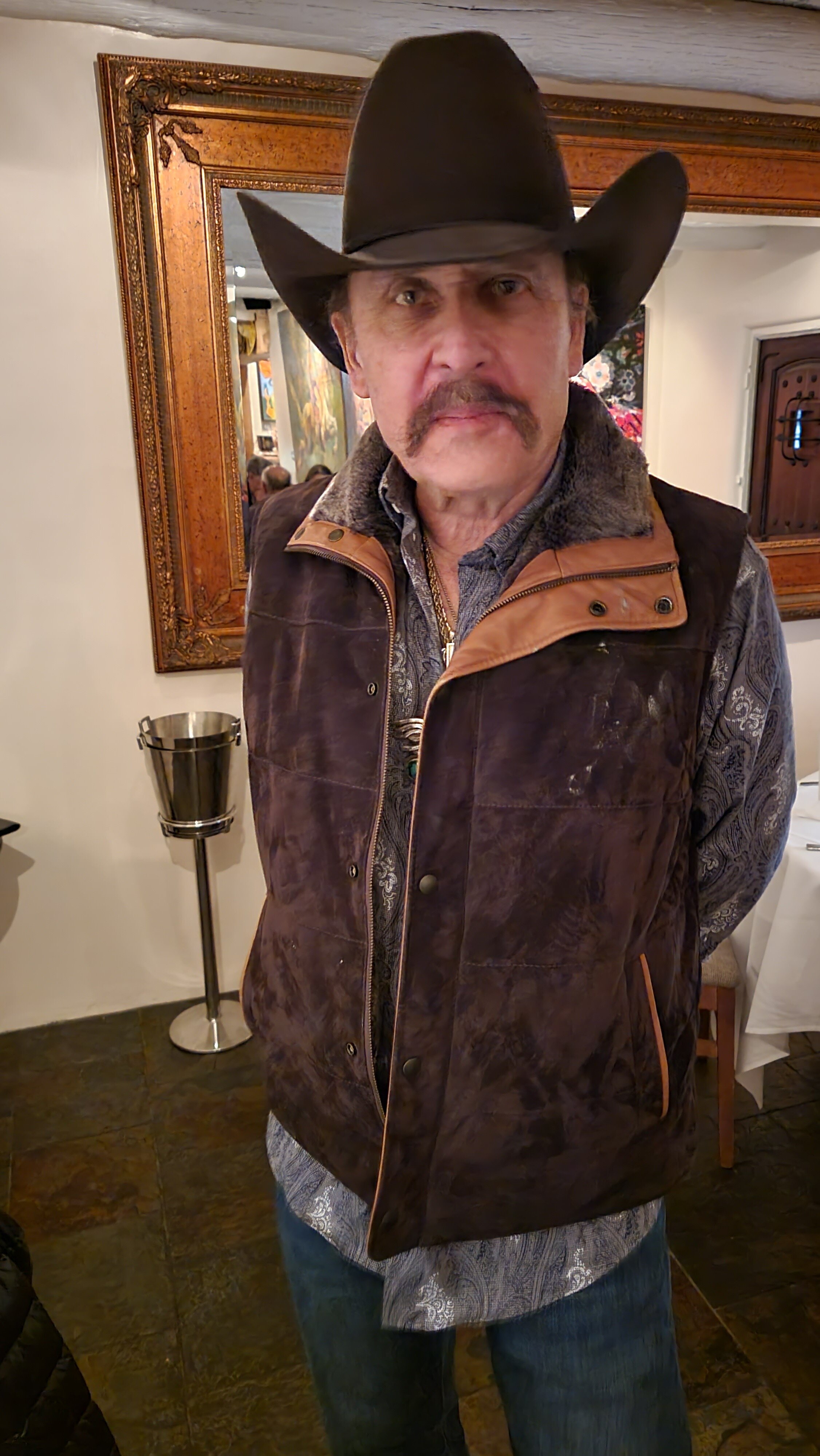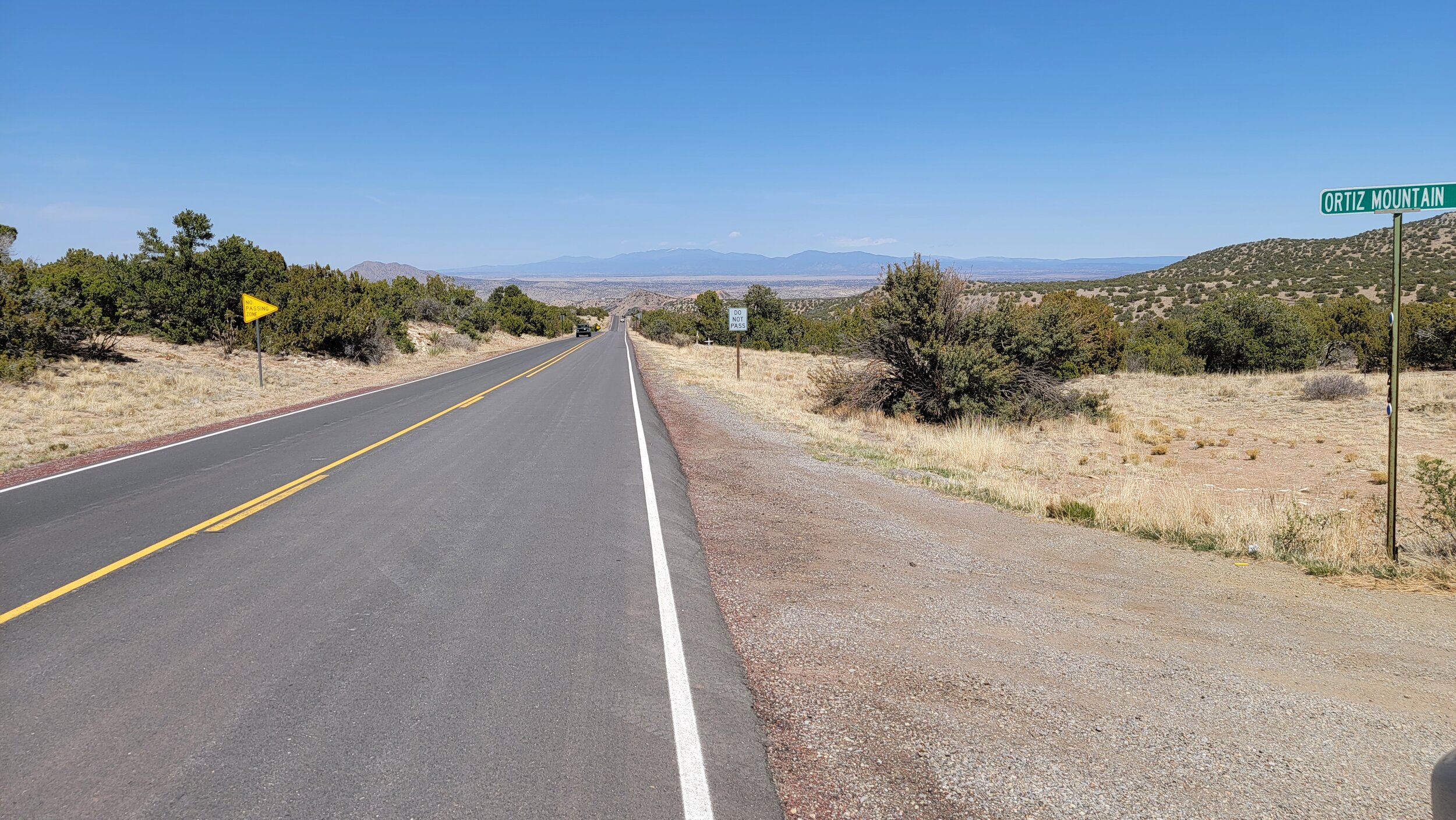“When I got to New Mexico, that was mine. As soon as I saw it, that was my country. I’d never seen anything like it before, but it fitted to me exactly. It’s something that’s in the air, it’s just different. The sky is different, the stars are different, the wind is different.”
“Lookie! Jezuz Krize this is a great place. Such MOUNTAINS!!!! Peaks are 13000 feet high — MIT SNOW!!!! Pines Aspins Snow Clouds Burros Swell People Injuns No photographers but me. You gotta see this place before you die.”
“Cherish Youth, but Trust Old Age”
When the Puritans landed in what they called the New World, the town of Santa Fe was already a teenager, having been founded by the Spanish governor of New Mexico in 1607. And Santa Fe itself, the second oldest city in the United States, is a mere whippersnapper compared to Taos Pueblo, the oldest continuously inhabited settlement in the United States, which has been the physical and spiritual home of the Taos Puebloan people for over a thousand years.
The Santa Fe/Taos region is also one of the earliest meccas for travelers, wanderers and artists in 20th Century America. Georgia O’Keefe famously settled in the Ghost Ranch, 60 miles North of Santa Fe. Ansel Adams arrived in the 1920s, returning time and time again to photograph the architecture of the Taos Pueblo and the surrounding landscape. And in the 1950s German immigrant and former spy Ernie Blake founded the Taos Ski Valley, making it a four-season destination.
It doesn’t take long in Taos and Santa Fe to understand what attracted the artists and the travellers. The open skies and astoundingly beautiful topography of the region made the area holy to the Pueblans and the Spanish (Santa Fe means “Holy Faith” in Spanish). The confluence of Indigenous, Spanish and Anglo cultures has created a unique cuisine, architecture and spirit found nowhere else - even in other parts of the Southwest. It’s easy to find something for everyone to discover in Santa Fe and Taos, but I wanted to share a few of my favorites:
Even the smallest towns in the region are home to ancient holy places.
Art
Santa Fe is blessed with an abundance of art museums and cultural opportunities. The Georgia O’Keefe museum houses the essential collection of “The Mother of American Modernism,” starting from her portraits of New York’s Skyscrapers and working its way through towards her famous paintings of the Flowers, Bones and Clouds she found in New Mexico. For a deep dive into O’Keefe’s time in New Mexico, you can drive out to the Ghost Ranch in Abiquiu, where she lived and worked. The ranch is currently open to day visitors, offering walking tours and trail rides.
For a more modern and interactive experience, try Meow Wolf. An artistic space the size of a big-box store, think of it a bit like a scare-free haunted house that lets you explore as you like. You can try to piece together the underlying narrative, or just discover how all the secret passages connect together.
The Santa Fe Opera Company’s summer festival is world-renowned. And although they’re planning a 2021 season of classics and new works, ticket sales are on pause due to Covid-19. Check for updates at https://www.santafeopera.org
Native American Culture
Santa Fe and Taos are a major center for Native American arts and culture in the United States. Like many indigenous communities (and New Yorkers), Native residents of Santa Fe have a range of feelings about outsiders interested in their culture. Here are a respectful few ways you can learn about and appreciate Native Culture in New Mexico:
The Museum of Indian Arts and Culture chronicles the development and significance of the arts for Native Americans. With live demonstrations and lectures, it’s a great way to understand the continued importance of art and culture to Native lives today.
The Taos/Santa Fe region is home to eight historic Pueblos, of which the Taos Pueblo is the largest and best known. It is still both a sacred space and day-to-day home to the Taos Pueblans. Make sure to respect the Pueblan’s culture by not taking any photographs of tribe members. The Pueblo is currently closed due to Covid-19, so check taospueblo.com to learn when it reopens.
The “Turquoise Trail” highway runs between Santa Fe and Albuquerque, passing through a number of towns where Native artists practice and sell traditional wares of jewelery, blankets, pottery and more.
The Santa Fe Indian Market is held in August every year, featuring the best works of Native Artists. The market will return in-person and online in August 2021. The venue will be limited to 75% capacity and timed tickets will be required to view the art. For more information, visit their website at https://swaia.org
Cuisine
New Mexico’s Cuisine is a unique blend of Spanish, Indigenous and Anglo. Expect lots of spices, and be prepared to answer when someone asks you how you like your chili sauce: Red, Green or Christmas (a little bit of both).
The Santa Fe Farmers Market, located at the recently-renovated Railyard, is a great place to sample the finer points of New Mexican Cuisine and local produce. https://santafefarmersmarket.com
Exploring:
Santa Fe and Taos both enjoy walkable downtown “old cities,” with traditional architecture, plazas and narrow streets while Santa Fe also has a larger car-dependent sprawl typical of American cities. To explore the region, you’ll almost certainly need a car. Unless you know what you’re doing in an SUV or 4WD vehicle, make sure to stick to major, well-travelled roads. Many “roads” marked on Google maps aren’t much more than dirt tracks, especially in Bureau of Land Management areas.
With a car, you’ll be able to discover natural destinations like the mountain peaks along the Enchanted Circle Byway or descend into Tao’s Rio Grande Gorge to swim in the river. Make sure to pack plenty of changes of clothing as you change elevation. The temperature at the bottom of the Rio Grande Gorge might be 40 or 50 degrees Fahrenheit off from the Taos ski valley just a half hour’s drive (and 3000 vertical feet) away.
You can also explore some of the unique man-made features of New Mexico. In the 1920s, a studious Harvard chemistry undergraduate named Robert Oppenheimer came to New Mexico to improve his health. 20 years later, he returned to start Los Alamos National Laboratories, the birthplace of the Atomic bomb. LANL is still an active government research installation, but it’s also home to a museum and tours with an unusual stipulation - all participants must be 18+ and US Citizens. Cell phones, cameras and recording devices of any kind are not allowed. Tours are currently closed due to Covid-19. More information can be found at https://www.lanl.gov/museum/manhattan-project/mapr-tours-info-2020.php
In the 1970s, a young architect named Michael Reyonalds, disgusted by the waste and ecological destruction caused by traditional construction, created the first “Earthship,” a self-sufficient, self-contained home built largely from recycled materials. Today Taos is home to the world’s largest community of Earthships, which can be toured daily or even rented for a night! Tours are open during Covid-19, but must be booked in advance. https://earthshipbiotecture.com/visit/
Getting Here
Although part of the appeal of Taos and Santa Fe is their isolation, they’re easy to get to. Most major cities offer direct flights to Albuquerque, an hour’s drive from Santa Fe, two hours from Taos and three from the Ski Valley. You can fly directly into Santa Fe from Dallas, LA, Phoenix or Denver on United or American Airlines, and Taos Air offers direct semi-private flights into Taos through Austin and executive airports in Dallas, LA and San Diego.
The traditional ways are still the best in much of Santa Fe, where Adobe homes are well protected from the desert’s dramatic temperature swings.
Some of us can be quite dogged in pursuit of the perfect souvenir.
Chef Fernando Olea’s Sazon Restaurant is a Santa Fe Institution. Although he was born in Mexico City, he’s as knowledgeable as anyone about the area and its inhabitants.
Don’t be afraid to discover the open road - but respect the distances involved and changes in climate. Be sure to carry water - someone might not always come along for quite some time.
Be sure to pack plenty of clothing - this desert snowstorm took place in April






